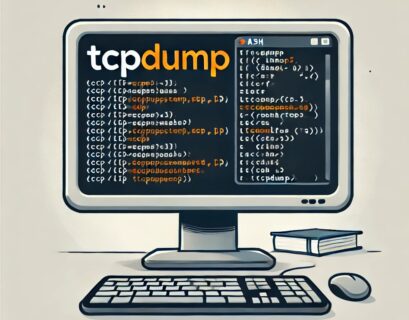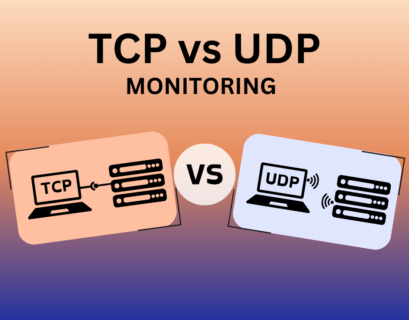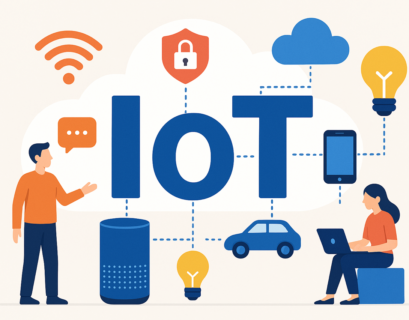The internet is constantly evolving to deliver faster, more secure, and more reliable connections. From browsing websites to streaming media, users expect instant performance without interruptions. To meet these growing demands, a new communication protocol was developed – the QUIC protocol. It’s designed to make the web faster and more efficient by solving many of the issues found in older technologies like TCP.
In this article, we’ll explore what the QUIC protocol is, how it works, why it was developed, and why it matters for the future of the internet.
Table of Contents
What Is the QUIC Protocol?
The QUIC protocol (Quick UDP Internet Connections) is a modern transport protocol designed to speed up internet communication. Unlike traditional protocols such as TCP, which have been around for decades, QUIC was built from the ground up to improve latency, reliability, and security.
QUIC runs on top of UDP – a lightweight alternative to TCP – and integrates encryption directly into the protocol. This makes connections not only faster but also more secure by default.
Today, QUIC serves as the foundation for HTTP/3, the latest version of the Hypertext Transfer Protocol used across the web. It’s a major step forward in how data travels between servers and clients, improving user experience on all types of networks.
Why Was QUIC Developed?
The main reason for developing the QUIC protocol was to overcome the limitations of TCP. While TCP has served the internet well for decades, it was never designed for today’s high-speed, mobile, and encrypted web.
TCP suffers from several issues:
- High latency due to multiple connection handshakes.
- Head-of-line blocking, where one delayed packet can slow down the entire connection.
- Separate layers for encryption, requiring additional setup time.
- Slow recovery from packet loss, especially on mobile or unstable networks.
Suggest: How Ping monitoring tracks the packet loss?
The QUIC protocol addresses all these problems by redesigning the transport layer around speed, reliability, and built-in security.
How the QUIC Protocol Works
QUIC uses UDP as its foundation to achieve faster and more flexible data transmission. On top of that, it adds mechanisms that ensure reliability and security similar to TCP – but without the overhead.
Here’s how QUIC works:
- Zero Round-Trip Time (0-RTT): Allows data to start flowing immediately, reducing latency.
- Built-in encryption: Uses TLS 1.3 natively, meaning security is an inherent part of the connection.
- Multiplexed streams: Multiple data streams can be sent simultaneously without interfering with each other.
- Connection migration: QUIC can maintain a session even when switching between networks, like from Wi-Fi to mobile data.
This makes QUIC especially efficient for applications that require low latency and high reliability, such as streaming, gaming, and real-time communication.
QUIC vs TCP: What’s the Difference?
Although both protocols serve the same purpose – transporting data between endpoints – QUIC is a modern reimagining of TCP’s design.
| Feature | TCP | QUIC |
| Transport Layer | Connection-oriented | Built on UDP |
| Handshake | Multi-step process | 0-RTT (faster setup) |
| Encryption | Added through TLS | Integrated (TLS 1.3) |
| Head-of-Line Blocking | Yes | No |
| Connection Migration | Not supported | Supported |
| Speed | Slower on high-latency networks | Optimized for performance |
QUIC eliminates many of TCP’s weaknesses while maintaining its core strengths – reliability and order. The result is a more efficient protocol that performs better under modern internet conditions.
QUIC and HTTP/3: The Connection
HTTP/3, the newest version of the Hypertext Transfer Protocol, is built entirely on top of QUIC. This means that QUIC is now the foundation for how modern web pages are delivered.
With QUIC and HTTP/3, websites load faster, especially those with many small resources like images, CSS files, and scripts. It also significantly improves performance over mobile and congested networks by minimizing latency and preventing data blockages.
The adoption of HTTP/3 powered by QUIC represents the next step in the evolution of internet communication – prioritizing speed, security, and efficiency for end users.
Benefits of Using QUIC protocol
The QUIC protocol provides several major advantages that make it ideal for today’s internet:
- Reduced latency: Connections start faster thanks to 0-RTT handshakes.
- Improved reliability: Independent streams avoid data delays caused by packet loss.
- Better mobile performance: Seamless transitions between networks without disconnection.
- Built-in security: Encryption is mandatory, increasing privacy and safety.
- Optimized performance: Uses bandwidth more efficiently than older protocols.
These features make QUIC one of the most efficient and secure networking protocols available today.
Challenges and Limitations
Despite its advantages, QUIC isn’t perfect. Some challenges remain as the technology continues to evolve:
- UDP blocking: Certain networks and firewalls still restrict UDP traffic, which can limit QUIC’s reach.
- Monitoring and analysis: Since QUIC encrypts more data, traditional diagnostic tools are less effective.
- Deployment complexity: Both clients and servers need updated support to fully enable QUIC and HTTP/3.
As adoption grows and infrastructure catches up, these challenges are gradually being resolved.
Understanding the ERR_QUIC_PROTOCOL_ERROR Message
When using browsers that support the QUIC protocol, users may occasionally see an error message like ERR_QUIC_PROTOCOL_ERROR. This typically occurs when the browser fails to establish or maintain a QUIC connection to a website.
In most cases, this error isn’t caused by the user or their device – it usually stems from one of the following:
- Network issues such as blocked UDP traffic or unstable internet connections.
- Server misconfiguration, where QUIC isn’t properly supported or conflicts with existing HTTPS settings.
- Browser cache or outdated settings that interfere with the QUIC handshake process.
To resolve it, users can try:
- Refreshing the page or restarting the browser.
- Clearing cache and cookies.
- Checking whether QUIC is disabled in the browser’s network settings.
- Ensuring no firewall or antivirus software is blocking UDP connections.
While the ERR_QUIC_PROTOCOL_ERROR may sound serious, it’s generally a temporary connectivity issue. As QUIC continues to evolve and gain broader support, these errors are expected to become much less common.
The Future of QUIC
The QUIC protocol is not just a performance upgrade – it’s a foundation for future internet technologies. Its flexibility allows for rapid evolution and adaptation to new use cases.
Ongoing research and development are exploring how QUIC can support:
- Real-time applications like video conferencing and gaming.
- Internet of Things (IoT) communications.
- Secure, low-latency enterprise networking.
With the global shift toward speed and security, QUIC is expected to play a vital role in shaping the next generation of online communication.
Why the QUIC Protocol Matters
The QUIC protocol represents a significant leap forward for the internet. It simplifies the way data is exchanged, improves performance across all types of networks, and sets a new standard for secure communication.
For developers, network providers, and everyday users, QUIC means faster connections, fewer interruptions, and a safer browsing experience. As more services adopt HTTP/3 and QUIC, these improvements will become the new normal for how the web operates.
Conclusion
The QUIC protocol marks a new era of internet connectivity – one where speed, security, and reliability are no longer trade-offs but core features. By rethinking how data moves online, QUIC overcomes the limitations of older systems like TCP and paves the way for a faster, more resilient web.
As adoption continues to grow, the QUIC protocol will remain at the heart of modern networking, powering the technologies and applications that define the future of the internet.






